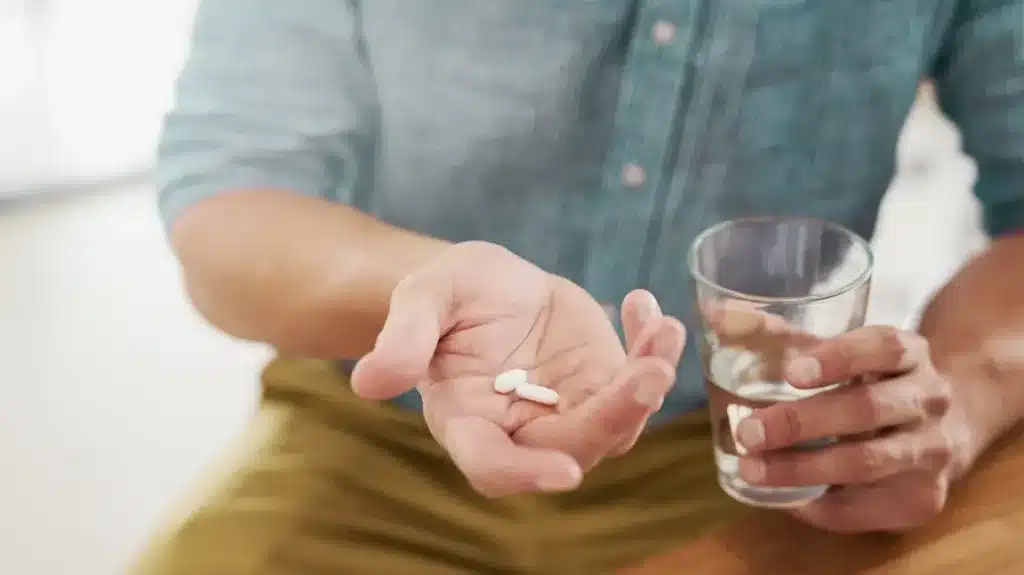In the realm of diabetes management, groundbreaking developments are continually on the horizon, offering new hope for individuals grappling with type 2 diabetes. The recent European Association for the Study of Diabetes (EASD) conference in Hamburg brought forth exciting news – a potential game-changer in the form of an oral medication called orforglipron. Although not yet approved, this drug is making waves due to its remarkable impact on oral drug A1C levels and weight loss, potentially outperforming existing options like Trulicity.
The Rise of GLP-1 Receptor Agonists
The world of diabetes treatment has seen remarkable innovation, particularly in the GLP-1 receptor agonist drug class. This category includes well-known medications such as Rybelsus and Trulicity. The latest data unveiled at EASD 2023 highlighted the emergence of a new oral GLP-1 medication, orforglipron, with the potential to significantly improve A1C levels and reduce body weight in individuals living with type 2 diabetes. Fill out this form to see if you or a friend qualify for Continuous Glucose Monitors.
The Study and Key Findings
Dr. Kieran Mather, a distinguished professor at the Indiana University School of Medicine, presented the findings of a 26-week clinical trial. This trial compared different doses of orforglipron, ranging from 3 mg to 45 mg, with Trulicity (dulaglutide) and a placebo. The participants in this study were around 59 years old on average, with an initial A1C level of 8.1% and a BMI of 35. They had been living with type 2 diabetes for approximately seven years.
The key findings from this study were nothing short of remarkable:
Oral Drug A1C Reduction:
After 26 weeks, it was evident that orforglipron led to substantial reductions in A1C levels. Participants on higher doses of orforglipron experienced a significant drop of about 2%, with all doses except the 3 mg dose showing remarkable results. In comparison, Trulicity and the 3 mg orforglipron dose led to A1C reductions of around 1%.
Weight Loss:
Participants on the higher doses of orforglipron witnessed incredible weight loss, with some individuals shedding up to 22 pounds. Notably, the weight loss didn’t appear to plateau by the end of the study, suggesting that orforglipron might continue to deliver even more weight loss benefits over a more extended period.
Read Guide about Wegovy Dosage Guide: The Best Way For Weight Loss
A1C Target Achievement:
The vast majority of participants who took orforglipron were able to achieve an A1C level of less than 7%. Impressively, approximately 90% of participants on specific orforglipron doses (24 mg, 36 mg, and 45 mg) successfully lowered their A1C below 7%. Moreover, around 80% of participants on the same doses achieved an A1C of 6.5% or lower. About one-third of those on the 36 mg and 45 mg doses reached an A1C of 5.7% or below, indicating the potential of orforglipron to normalize blood sugar levels in individuals with type 2 diabetes.
Significant Weight Loss:
Nearly 80% of participants on the higher doses of orforglipron achieved at least 5% weight loss, a crucial milestone for health improvement. Moreover, nearly half of those on the higher doses accomplished at least 10% weight loss, and approximately one-quarter experienced a substantial weight loss of at least 15%.
Must Read: CGMs in noncritical care hospitals optimizes glycemic control
Safety and Tolerability
Like many other GLP-1 medications, orforglipron did present some side effects. The most commonly reported adverse effects were gastrointestinal in nature, primarily nausea and vomiting. Fortunately, these adverse events tended to be mild to moderate in severity. Dr. Mather noted that side effects generally occurred early in the trial and often when doses were increased. Most of these adverse reactions resolved within 4-8 weeks. Looking ahead, Dr. Mather expressed optimism that better tolerability might be achieved with a different dosing schedule.
Importantly, there were no reports of severe hypoglycemia, and clinically significant hypoglycemia was minimal across the treatment groups.
Also, read about Investigating INV-202: A New Hope for Diabetic Kidney Disease
Implications for Type 2 Diabetes Management
The results of this study are profoundly significant for individuals living with type 2 diabetes. Orforglipron, with its potential to become another oral option for diabetes management, offers newfound hope. Presently, the only oral GLP-1 available for type 2 diabetes is Rybelsus (semaglutide). However, the horizon is bright with several other oral GLP-1s in development, each offering its own set of benefits:
Novo Nordisk’s OASIS 1 trial results, involving oral semaglutide at a higher dose of 50 mg for obesity, showed remarkable A1C reductions of up to 2.2% in type 2 diabetes. Additionally, this higher dose led to extraordinary weight loss of over 17% in individuals with obesity.
Pfizer’s danuglipron demonstrated dose-dependent reductions in A1C of up to 1.2% and weight loss of up to 9 pounds in those with type 2 diabetes.
One of the significant advantages of oral GLP-1s, like orforglipron, is their potential to eliminate the need for injections. This innovation promises to empower individuals with diabetes, allowing them to reach their treatment and health goals more effectively.
Oral Drug A1C Conclusion
In conclusion, the introduction of orforglipron presents a compelling shift in the landscape of type 2 diabetes management. The remarkable improvements in A1C levels and weight loss, coupled with the potential for oral administration, signify a bright future for those living with diabetes. As ongoing research and development continue to explore the possibilities, the promise of more effective and convenient treatments for type 2 diabetes becomes increasingly attainable. Stay tuned for further updates on this exciting development that has the potential to transform the lives of millions.


